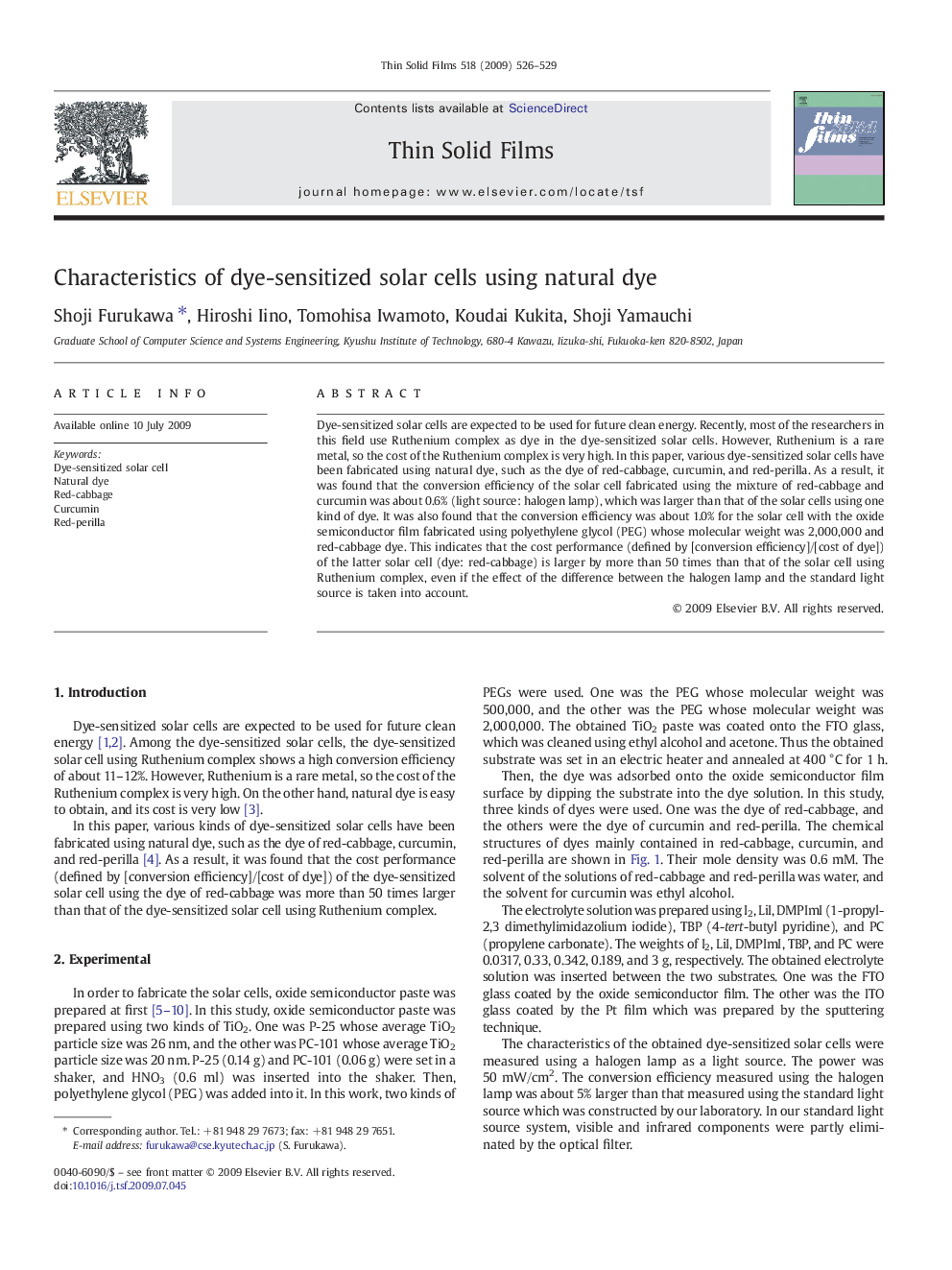| Article ID | Journal | Published Year | Pages | File Type |
|---|---|---|---|---|
| 1672155 | Thin Solid Films | 2009 | 4 Pages |
Dye-sensitized solar cells are expected to be used for future clean energy. Recently, most of the researchers in this field use Ruthenium complex as dye in the dye-sensitized solar cells. However, Ruthenium is a rare metal, so the cost of the Ruthenium complex is very high. In this paper, various dye-sensitized solar cells have been fabricated using natural dye, such as the dye of red-cabbage, curcumin, and red-perilla. As a result, it was found that the conversion efficiency of the solar cell fabricated using the mixture of red-cabbage and curcumin was about 0.6% (light source: halogen lamp), which was larger than that of the solar cells using one kind of dye. It was also found that the conversion efficiency was about 1.0% for the solar cell with the oxide semiconductor film fabricated using polyethylene glycol (PEG) whose molecular weight was 2,000,000 and red-cabbage dye. This indicates that the cost performance (defined by [conversion efficiency]/[cost of dye]) of the latter solar cell (dye: red-cabbage) is larger by more than 50 times than that of the solar cell using Ruthenium complex, even if the effect of the difference between the halogen lamp and the standard light source is taken into account.
